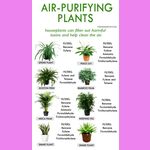While I have not always been particularly gifted when it comes to keeping my plants alive, I have constantly loved being in a garden. That said, I do still struggle with the plants that grow (or that I attempt to grow) inside our home. More typically than not, we discover that our green thumbs just don’t live up to our expectations … Particularly when it comes to indoor plants, which can be challenging to keep alive. Alexz Fajardo , I’m going to break down which houseplants are the simplest to keep alive and some reliable pointers for caring for your indoor plants. This little gardening hack makes certain to have your next guests believing your green thumb remains in full blast!
All set to add a little life to your space? Here we go …

As you can see above, each of the plants above adds a beautiful touch of life and nature to any space. Now, after seeing which plants are most convenient to grow indoors, I’m going to respond to some regularly asked questions I typically hear about how to keep houseplants alive and flourishing …
Just how much sunlight should it get?
I always discover that my houseplants do best when they’re put in indirect or direct sunlight. I have fiddle leaf fig trees in several spaces in my home, and the more sunshine they get, the greener the leaves appear. East- and west-facing windows aren’t the finest place for your plants as they won’t get light all day long, and west-facing windows will actually include more heat.
How often should I water it?
Providing your plants too much water might appear like you’re taking care of them, however it’s in fact one of the simplest methods to lose your plants. When watering, offer your plant enough so that it soaks the soil, however then make sure to put out any excess water about 30 minutes later– that water will no longer be absorbed by the plant. I like to water my home plants once every 3-4 days, but you will really require to simply get utilized to your plant to see when the soil has actually dried out.
Should I fertilize my houseplant?
Houseplants, unlike potted or ground-planted plants, do not need fertilizer in order to grow. In short, you do not need to fertilize your indoor plant.
How will I observe if my plant is struggling?
If your plant is growing at an extreme tilt, you may have root rot and will require to very first let your soil dry, and later on practice watering less. A little lean toward the sunlight is OKAY, it simply implies your plant is attracted to those sunbeams! If you discover your plant leaning, rotate it occasionally.
Another telltale sign for root rot is if you observe a rotten egg odor coming from your plant. This is challenging to repair, as you will need to cut the parts of the root that are rotted in order to conserve your plant. My best recommendation in this case is to take your plant into your local nursery and have them work some magic.
If you observe a white crust or buildup on the leaves of your plant or the pot, no need to worry– that’s simply a sign of mineral accumulation from your water. I like to use filtered water for my indoor plants as it prevents this mineral accumulation. I have a little trick I use– any time I have a guest over who puts themselves a glass of filter water however does not finish it, I pour that water into my plants after my guest has left. That method, I save water and water my plants. It’s a win-win!
If notification that your plant’s leaves are falling off or appear pale green or yellow, you need to put it in a location with more light (and probably less water). Fallen or misshapen leaves signify insufficient sunshine, and yellowing signifies overwatering.
Dust can interfere with how well the plant breathes through its leaves, and could cause issues down the line. Plus, your plant will look so much more lively with clean, glossy leaves.
And there you have it!
Article source: https://laurenconrad.com/blog/2016/09/green-thumb-the-easiest-houseplants-to-keep-alive


